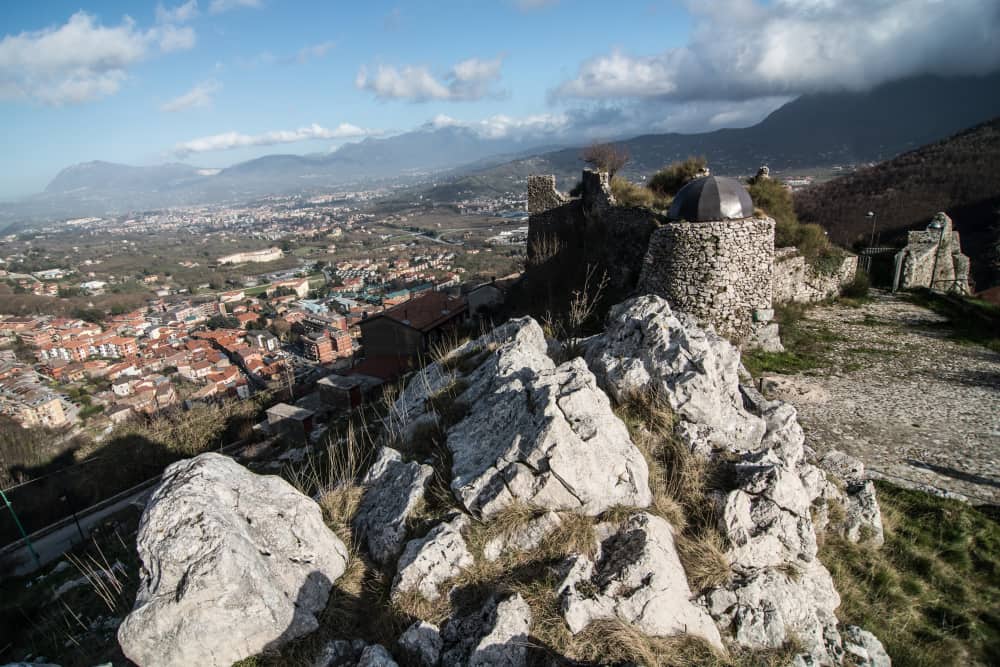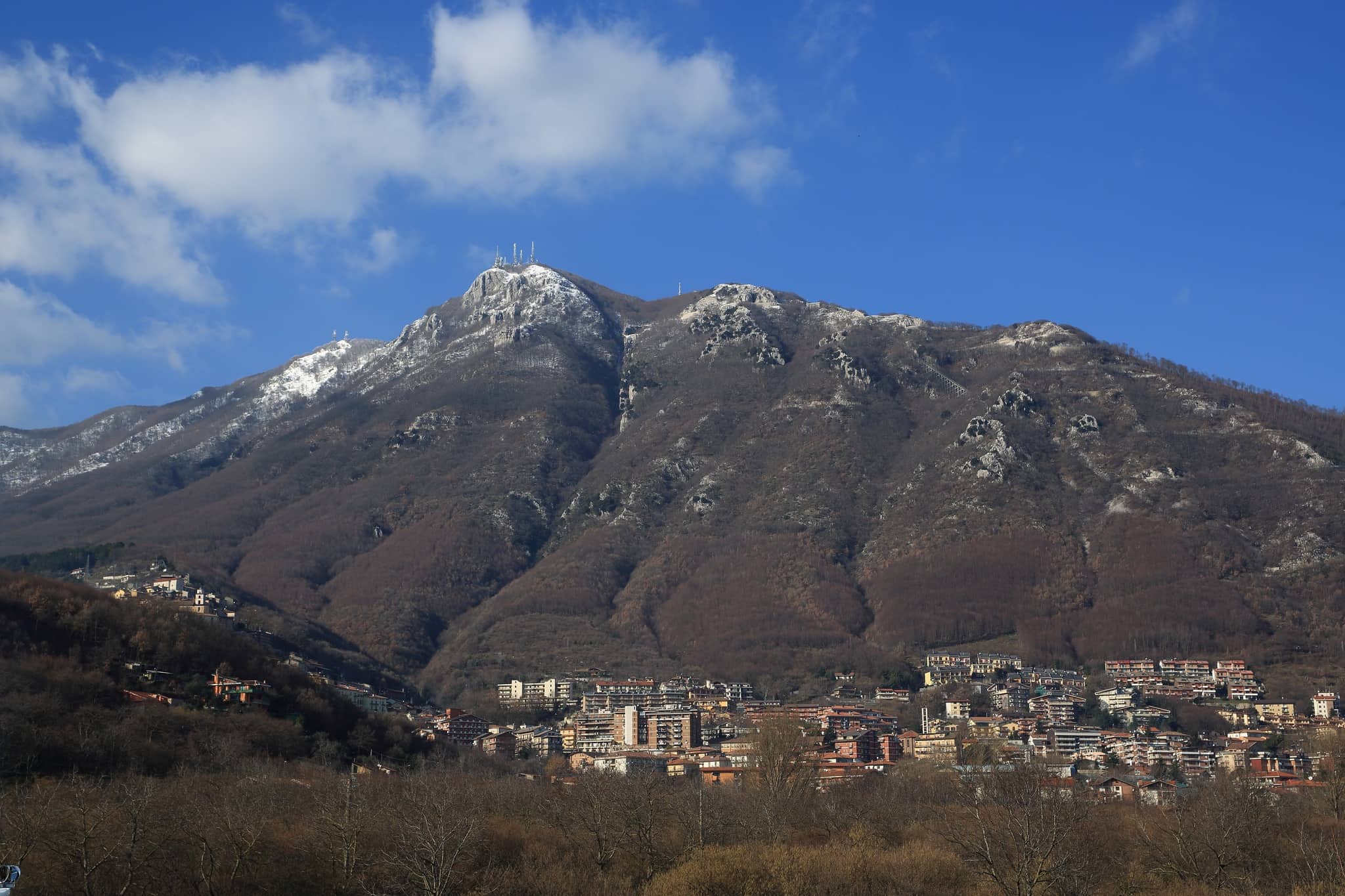The importance of a town behind Avellino
Mercogliano is a town located on the outskirts of Avellino, about 3km from it. The origin of its name seems to derive from Mercurianum, a clear reference to the cult of Mercury practiced by the inhabitants at the origins of the town. With about 13,000 inhabitants, it is famous for the territorial Abbey of Montevergine, destination of numerous pilgrimages from all over Italy and the world, located in the hamlet that takes the homonymous name. In the last 35 years it has received a great demographic, urban and industrial growth thanks to the flourishing economic center of Torrette-Torcelli, site of numerous commercial activities.
A country in step with the times that remains tied to propitiatory traditions
.jpg)
The hilltop town of Mercogliano at the foot of Montevergine can be reached thanks to the Avellino West junction of the Napoli-Canosa highway, which will allow you to reach the center of the country in a few minutes. The areas where it is possible to park the vehicles for free are distributed throughout the town, and then you can walk along the tree-lined Viale San Modestino, the most popular avenue in the town that takes the name of the patron saint. Rich of typical taverns and restaurants of the Irpinia area, cafes, pastry shops and stores, the Viale about 500 meters long starts from a small and well-kept public garden and ends in the small Square of the same name, characterized by a soil covered with cobblestones that houses the Parish of Saint Modestino Bishop. Every February 17th, the day on which San Modestino is celebrated, in the open space of the Funicolare di Mercogliano site on the aforementioned avenue, there is the lighting of the "focarone", a typical propitiatory rite during which the wood of the place is set on fire. The cobblestones (or "sampietrini" in Italian) are a recurring urbanistic element in Mercogliano, being taken up by both parallel avenues that start from the Church of the Annunciation, dating back to the XV century, and lead to the Town Hall of the town, located at the foot of the hamlet of Capocastello, a medieval village characterized by its vertical urban growth in local stone.
The hamlet of Capocastello: a cultural itinerary up to the remains of the Castle

The hamlet of Capocastello, name deriving from the ancient castle that stood on the top, can be reached on foot, thanks to a staircase that starts from Piazza Municipio. During the ascent, you will meet the three churches that host: the small Church of San Giovanni, the Mother Church of Mercogliano Santi Pietro e Paolo, and the Church of the Immaculate Conception, which houses the Antiquarium in the crypt, a free museum that exhibits both ceramic and numismatic material dating back to the 12th-13th century, and artifacts dating from the late Middle Ages and the beginning of the Modern Age. At the end of your uphill path, you will be able to take a short stretch of road that will allow you to visit the ruins of the Mercogliano Castle, anciently placed to dominate the town in order to defend and prevent the passage on the western side. Built in the second half of the 11th century, it overlooks Mercogliano and nearby Avellino, as it can also see the Picentini Mountains that close the valley. After being the scene of numerous battles, after the damage to the earthquake of 1140 and 1732, after a fire broke out in 1656 and after the demolition of some portions to obtain materials for the construction of new private buildings, the Castle was definitively destroyed by the troops French in 1799. Recent restorations have brought to light one of the five gates of the walls that once surrounded the village. This is the “Porta dei Santi” which, at the top, shows a fresco depicting S. Modestino, S. Fiorentino and S. Flaviano.
The hamlet of Montevergine: the importance of a place that welcomes millions of pilgrims

The hamlet of Montevergine, located at over 1,260 meters above sea level, takes its name from the Catholic sanctuary it houses. You can reach Montevergine through the Funicolare di Mercogliano, which connects the hamlet to the town. The ancient name, according to some manuscripts, derives from “Mount of Virgil”, as it was believed that the Latin poet Virgil had a vegetable garden in this place. Only after the church foundation was it renamed Montevergine, a clear dedication to the Virgin Mary. In addition to the funicular, the Abbey can be reached via a winding road, chosen six times in the Italian Cycling Tour as a finish line. The territorial Abbey of Montevergine is one of the six national territorial abbeys and includes the Sanctuary of the same name: a national monument which houses the painting of the Madonna di Montevergine, dating back to the XIII-XIV century and depicting the Virgin Mary sitting on a throne with arm baby Jesus. The Sanctuary includes an ancient basilica and a new basilica: built in 1126, nothing remains of the first basilica after the collapse of 1629. Rebuilt a few years later, it allowed access to the single nave through a corner staircase in the courtyard of the monastery, which overlooking the whole valley. The new basilica, instead, was completed in 1961 and built by the architect Florestano di Fausto. The façade is covered in stone and divided into three compartments, where as many entrances open: in the center there is a rose window that depicts, through the colors of the glass, the coronation of the Virgin. Next to the new basilica stands the 80-meter high bell tower, clad in white and gray granite, characterized by an Ionic architectural style in the lower part, and Corinthian in the upper part, unlike the basilica which was conceived using a Neo-Romanesque architectural style. The monastery includes, in addition to the two basilicas, the crypt of San Guglielmo and the statue dedicated to him outside, the votive hall, a museum that contains numerous archaeological finds or jewels and artworks brought by pilgrims or found around the sanctuary, and the homes of the residents. Every year the Sanctuary is visited by about one and a half million pilgrims.
The Abbatial Palace of Loreto: one of the most important art treasures of Irpinia

An important religious building in the Mercogliano area is the Abbatial Palace of Loreto, built by the brilliant architect Domenico Antonio Vaccaro. The current abbey replaces a monastery dating back to the 12th century, razed to the ground by the earthquake of 1732, which had the role of providing adequate health care to the weak, elderly and infirm who had difficulty in receiving treatment in the Montevergine area. Today the building is used for the organization of orchestral events, both internal and external, thanks to the wonderful cloister that the building includes, but you will also have the opportunity to visit areas rich in history, such as the State Library of Montevergine which occupies a wing of the structure and preserves over 200,000 religious, musical, social, political and economic manuscripts, and the ancient pharmacy containing over 300 hand-painted majolica vases.
The Regional Park of Partenio: the homeland of renowned products all over the world

Mercogliano is part of a protected natural area, the Regional Park of Partenio, which extends to the provinces of Avellino, Benevento, Caserta and Naples. The park, especially in the area of Avellino and Benevento, has staging points and picnic areas, much appreciated by hikers who undertake mountain routes and excursions. Being a large uncontaminated green area, it boasts a quality agricultural production, including black truffles of Partenio, porcini mushrooms, the so-called "chestnuts of the priest" cultivated in the low mountain as well as the hazelnuts with which nougat ("torrone" in Italian) is produced in the nearby town of Ospedaletto d'Alpinolo. There is no lack of crops of fruit trees that add to the flavors of Irpinia the annurca apple, the imperial cherry, olives and grapes. For the production of olive oil, traditional processes are still used with ancient mills; while from the grapes harvested in the valley, great quality wines are produced: an example is the Fiano di Avellino DOCG. Peculiar to the Benedictine monks of the abbey of Montevergine is the production of the Anthemis liqueur, made thanks to a recipe that is preserved over time. Visiting Mercogliano and the neighboring countries you can taste the typical dishes of an area that embraces the earth, making its fruits renowned all over the world.
About the author
Written on 02/12/2019




Alfred Runo
A journey through history that Mercogliano has preserved for centuries: a journey from the historic center of the city to the Sanctuary of Montevergine